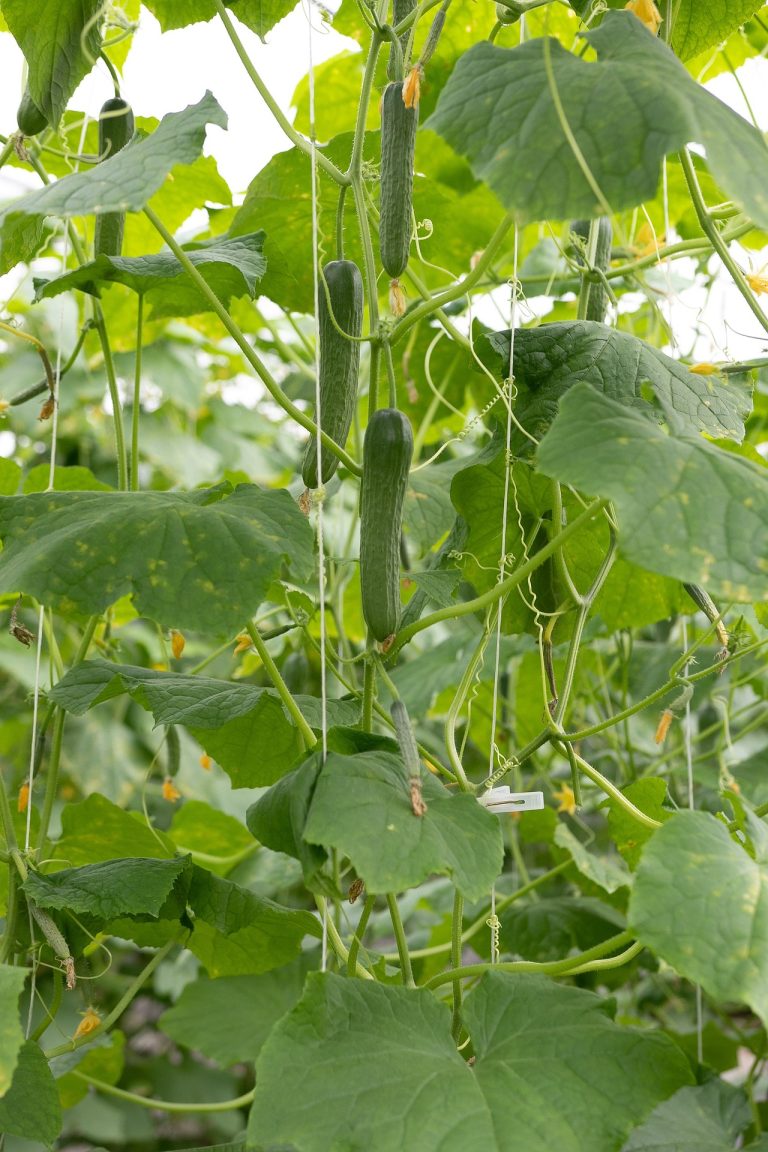Cucumber: A Comprehensive Exploration of Its Origins, Botanical Features, Nutritional Benefits, Cultivation Practices, Culinary Uses, and Economic Significance
Introduction
Cucumber, scientifically known as Cucumis sativus, is a widely cultivated vine plant belonging to the Cucurbitaceae family, which also includes melons, squash, and pumpkins. Renowned for its crisp texture, mild flavor, and high water content, cucumber has been cultivated for thousands of years and is enjoyed worldwide in various culinary dishes, salads, and even beverages. This article delves into the multifaceted world of cucumbers, exploring their historical origins, botanical characteristics, nutritional composition, cultivation techniques, culinary versatility, health benefits, and economic importance.

Historical Origins and Spread
Cucumbers have a rich historical legacy that spans multiple civilizations and regions. Originating in the Indian subcontinent, cucumbers were domesticated over 3,000 years ago and were cultivated by ancient civilizations such as the Egyptians, Greeks, and Romans. Historical records from ancient Egypt and Rome document the cultivation and culinary use of cucumbers, highlighting their early importance as a food crop.
Cucumbers spread across Asia and Europe through trade routes and cultural exchanges, becoming a staple in Mediterranean cuisines and later introduced to the Americas by European explorers during the Age of Exploration. Today, cucumbers are cultivated globally in diverse climates, contributing to agricultural production and culinary traditions worldwide.
Botanical Characteristics
Cucumbers exhibit distinct botanical features that define their growth habits, fruit morphology, and reproductive characteristics:
- Vine Structure: Cucumber plants are climbing or trailing vines that require support for optimal growth. They feature long, slender stems with tendrils that help them climb and sprawl along the ground.
- Leaves: The leaves of cucumber plants are palmate or lobed, with a coarse texture and rough surface. They are arranged alternately along the stem and provide a backdrop for the developing fruit.
- Flowers: Cucumber plants produce yellow flowers that are typically monoecious, meaning they have separate male and female flowers on the same plant. The female flowers are distinguished by the small cucumber-like ovary at their base, which develops into the fruit upon pollination.
- Fruit: Cucumber fruits vary in size, shape, color, and texture depending on the cultivar. Common types include slicing cucumbers, pickling cucumbers, and specialty varieties such as English cucumbers (long and slender with thin skins). The fruit is typically cylindrical, with a smooth or slightly ribbed surface, and ranges from dark green to yellowish-green when ripe.

Nutritional Composition and Health Benefits
Cucumbers are celebrated not only for their refreshing taste and culinary versatility but also for their nutritional richness and potential health benefits:
- Hydration: Cucumbers are composed of over 95% water, making them an excellent hydrating food choice, especially during hot weather or physical activity.
- Vitamins and Minerals: While low in calories, cucumbers are rich in vitamins such as vitamin K, vitamin C, and several B vitamins (including B1, B5, and B7). They also contain minerals such as potassium, magnesium, and manganese, which support electrolyte balance, nerve function, and bone health.
- Antioxidants: Cucumbers contain various antioxidants, including flavonoids (e.g., quercetin, kaempferol) and lignans, which help neutralize free radicals, reduce inflammation, and promote overall health.
- Dietary Fiber: Cucumbers are a good source of dietary fiber, particularly in the skin, which aids in digestion, promotes satiety, and supports gastrointestinal health.
Regular consumption of cucumbers has been associated with hydration, improved skin health, weight management, and potential cardiovascular benefits due to their nutrient profile and low-calorie content.
Cultivation Practices
Cucumber cultivation requires specific environmental conditions, soil preparation, and agronomic practices to optimize plant growth and fruit production:
- Climate and Soil Requirements: Cucumbers thrive in warm temperatures (18-32°C or 65-90°F) with ample sunlight and well-drained, fertile soil. They are sensitive to frost and require protection or greenhouse cultivation in cooler climates.
- Propagation: Cucumbers are propagated from seeds, which are sown directly into the soil or started indoors in biodegradable pots several weeks before transplanting. Seedlings are transplanted outdoors after the last frost date or when soil temperatures are consistently warm.
- Planting and Spacing: Cucumber plants are spaced according to their growth habit and cultivar type, typically 30-60 cm (12-24 inches) apart in rows or raised beds. Adequate spacing promotes airflow, reduces disease pressure, and facilitates plant management and harvesting.
- Watering and Fertilization: Cucumbers require regular watering to maintain soil moisture levels, particularly during flowering and fruit development stages. Fertilization with balanced nutrients (nitrogen, phosphorus, potassium) supports plant growth, flowering, and fruit set.
- Support and Trellising: Some cucumber varieties, especially vining types, benefit from trellising or support structures (e.g., stakes, cages) to elevate the vines, promote air circulation, and prevent fruit rot.
- Pest and Disease Management: Integrated pest management (IPM) strategies are used to control pests such as aphids, cucumber beetles, and spider mites. Common diseases affecting cucumbers include powdery mildew, downy mildew, and bacterial wilt, managed through cultural practices, crop rotation, and use of resistant varieties.

Culinary Uses and Culinary Diversity
Cucumbers are valued for their crisp texture, mild flavor, and culinary versatility, contributing to a wide range of dishes and preparations:
- Fresh Consumption: Sliced cucumbers are commonly consumed fresh in salads, sandwiches, wraps, and as a garnish for soups and appetizers.
- Pickling: Pickling cucumbers, such as Kirby cucumbers, are preserved in brine or vinegar solutions with herbs and spices, yielding tangy pickles enjoyed as snacks, condiments, or accompaniments to dishes.
- Beverages: Cucumbers are used to infuse water, create refreshing cucumber juices, and enhance cocktails and mocktails with their subtle flavor and hydrating properties.
- International Cuisine: Cucumbers feature prominently in international cuisines, including Mediterranean, Middle Eastern, and Asian dishes such as tzatziki (Greek yogurt dip), cucumber kimchi (Korean fermented side dish), and cucumber raita (Indian yogurt condiment).
- Salad Varieties: English cucumbers are favored for their slender shape and mild flavor in salads, while slicing cucumbers are versatile additions to mixed greens, pasta salads, and vegetable platters.
In addition to culinary applications, cucumbers are used in skincare products and spa treatments for their hydrating properties and cooling effects on the skin.
Health and Medicinal Uses
Cucumbers have traditional uses in natural healing practices and herbal remedies:
- Skin Care: Cucumber slices or cucumber-based masks are applied topically to soothe sunburns, reduce puffiness around the eyes, and hydrate dry skin due to their high water content and cooling properties.
- Detoxification: Cucumber water or cucumber juice is often included in detox diets and cleansing regimens to promote hydration, flush toxins from the body, and support overall detoxification processes.
- Digestive Health: Cucumbers are believed to aid digestion, alleviate constipation, and promote gastrointestinal health due to their fiber content and water-soluble vitamins.
- Anti-inflammatory Effects: Cucumber extracts and juices may have anti-inflammatory properties, potentially benefiting conditions such as arthritis, skin inflammation, and digestive disorders.
Research continues to explore the potential health benefits of cucumbers, particularly in skincare, digestive health, and overall wellness, highlighting their role in natural medicine and holistic approaches to health.

Economic Significance and Global Trade
Cucumber production is economically significant in both developed and developing countries, contributing to agricultural economies and international trade. Major cucumber-producing countries include China, India, Russia, Turkey, and Iran, with varietal diversity and local market preferences influencing production practices and trade dynamics.
Global cucumber trade involves fresh cucumber exports, pickled cucumber products, and processed goods (e.g., cucumber juice, extracts), catering to diverse culinary preferences and consumer demands worldwide.
Research and Innovation
Ongoing research in cucumber cultivation and breeding focuses on:
- Varietal Improvement: Developing cucumber varieties with enhanced disease resistance, improved fruit quality (e.g., uniform shape, thin skins), and extended shelf life to meet consumer preferences and market demands.
- Sustainable Practices: Promoting sustainable agriculture practices, water-use efficiency, integrated pest management (IPM), and organic farming methods to reduce environmental impact and conserve natural resources.
- Nutritional and Functional Properties: Investigating the bioactive compounds, nutritional profiles, and potential health benefits of cucumbers for applications in functional foods, nutraceuticals, and skincare formulations.

Conclusion
In conclusion, cucumbers epitomize culinary diversity, nutritional richness, and agricultural significance—a versatile crop cherished for its crisp texture, mild flavor, and hydrating properties. From ancient origins in the Indian subcontinent to global cultivation and consumption, cucumbers continue to captivate taste buds, inspire culinary creativity, and contribute to agricultural economies worldwide. As we appreciate their botanical diversity, nutritional benefits, and culinary versatility, cucumbers remain a staple in diets, skincare routines, and culinary traditions, symbolizing health, freshness, and culinary innovation in the modern era.

